Buy HD e-Books & Text —— www.ccelian.com
the Art of Nao
Scrolls: 1 . 2a . 2b . 3 . 4 . 5 . 6 . 7 . 8 . 9 . 10 . 11 . 12 . 13 . 14 . 15 . 16 . 17 .
18 . 19 . 20 . 21 . 22 . 23 . 24 . 25 . 26 . 27 . 28 . 29 . 30 . 31 . 32 . 33 . 34 .
< Scroll 27 ____________________________________________________ Scroll 29 >
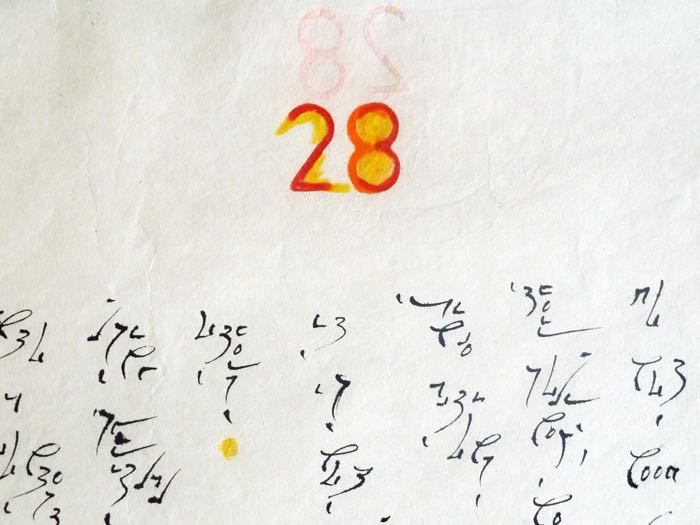
.jpg)
Scroll 28 . 92 x 171 cm ~ 36 x ~ 67 inches
__________________________
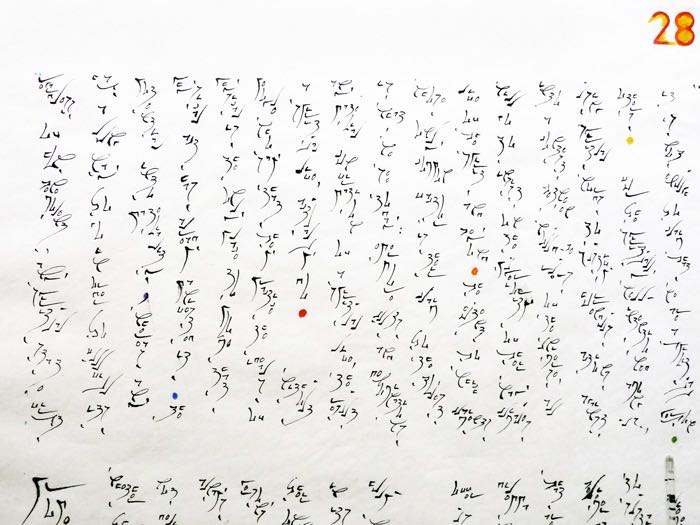
Scroll 28-section 1.1
Regardless of how benevolent, any spiritual state first has a long way to go in order to fulfill its potential into materiality, whereas any physical act has already manifested it. The physical is the only place to prove that people who say that they practice the ideals of a spiritual life, actually do.
Without any material confirmation of a spiritual life, the result is what we see today: ever more cults and denominations whose only common factor is their claim to the truest life of the spirit and beyond. The extent to which claimants will go to insist on the superiority of their way climaxes in a contest between would-be rulers of the Universe, all using spiritual words to justify horrendous actions against others.
For the spiritually well intentioned among us, it is not enough to claim that we are a spiritual person.
________________
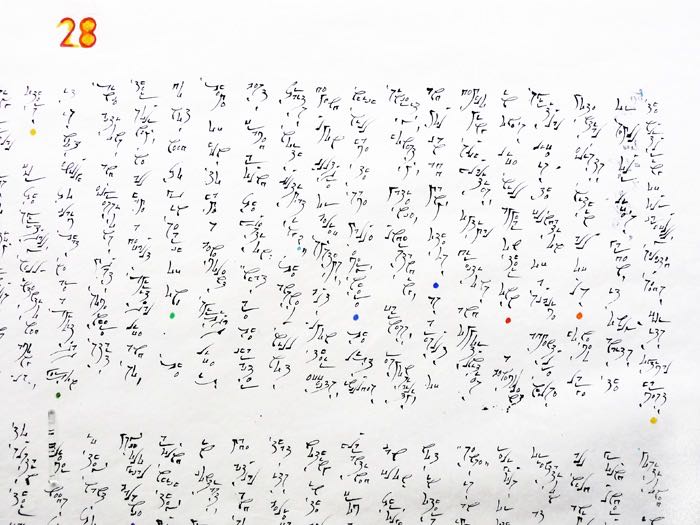
Scroll 28-section 1.2
Since actions and expressions must somewhere start their journey, we all have a default spiritual life and so, do not need to go in search of one.
The theme of how to have a benevolent spiritual life is best framed around the question: "What are the character traits worth cultivating?" The answer will not depend upon culture or belief systems, but upon their effects, which will have the same value everywhere. The list includes sincerity, honesty, patience, understanding, fairness, responsibility, and you can add many others yourself. As a result of developing such qualities, optimal directions and opportunities in one’s life will appear on their own.
A benevolent spiritual life is the foundation of a sublime adventure whose potential exists within all of us. However large or small our life’s garden, it only awaits the nurturing of our carefully selected seeds for its optimal harvest.
____________________
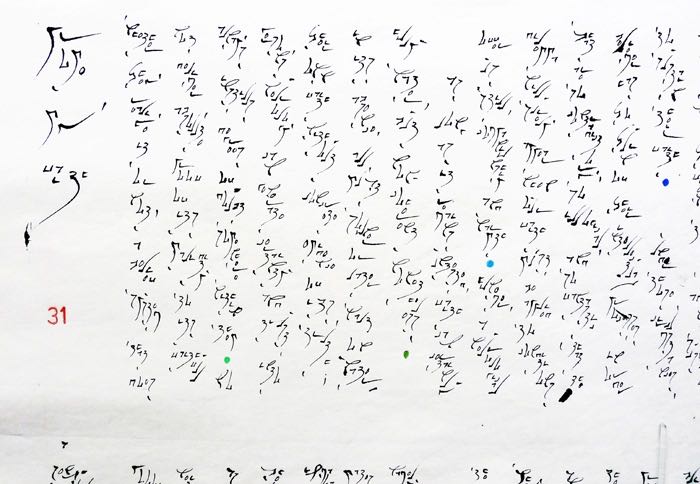
Scroll 28-section 2.1
Prove My Faith 31
Whether they realize it or not, a belief system that does not deliver absolute proof of its validity to its faithful always instills degrees of doubt somewhere within them. No person’s neurology can generate certainty and trust into their own faith without concrete evidence of its truth; in its absence, all must sooner or later walk on water—holy water, but non-coherent nonetheless.
As long as it remains untested, faith can certainly offer us still, companionship and warmth. However, a neurological dilemma will surely appear when our faith must be applied to conditions that are so contradictory, so illogical, and so fantastic that the believer has to turn off their intellectual processes in order to sustain their faith.
________________
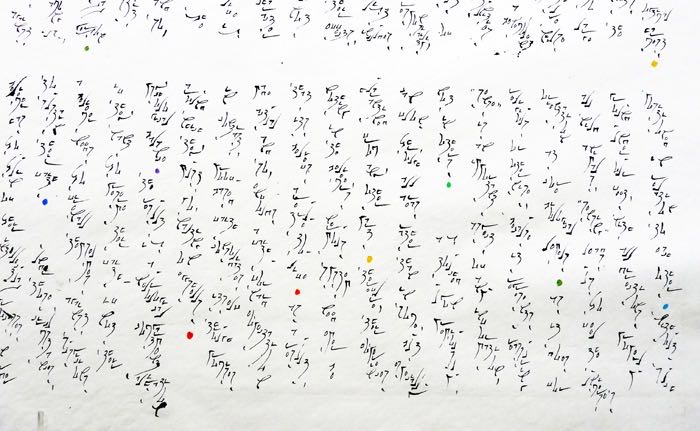
Scroll 28-section 2.2
Under those circumstances, a believer needs to firewall themselves against suspicions if they want to preserve their faith—if not their psychological balance. The result is a neurological compartmentalization around which they must go, walking on eggshells.
In contrast, proof-based faith consolidates itself through promises made actual and so, enfolds a faith-forward expectation that its beliefs are true-to-life. As a result, nothing in the believer’s nervous system need ever be quarantined from any other part. Therefore, their experiences can flow through all areas rather than in some, but especially not in others.
As touched upon previously, “sense” is an important aspect of any information, religious or otherwise, because it represents reassuring orientation at core biological levels. As it does for all wild animals, “sensing” leads us to feel the universe’s ground under our feet, with all directions properly positioned in relation to each other. Without such >
__________________
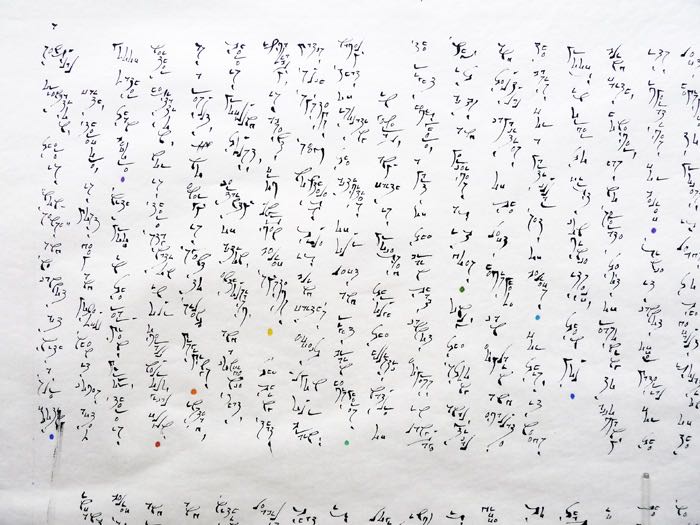
Scroll 28-section 3.1
> a sensual orientation, there is “non-sense” and we cannot act with a sure footing.
Faith, therefore, is most deep and powerful when it comes after proof rather than before. With proof in the rear-view mirror, there is neither hesitation, nor is there stagnation in our overall neurological flow. As a result, no energy is spent to silence misgivings. Instead, there is profound trust, certainty of action, enthousiasm, and a confidence that, invariably, is absent from unproven belief systems.
The thing that makes such systems seem nonetheless true is blind faith’s effect upon our brain: namely, that of isolating the activities of our left and right brain hemispheres.
In general, any faith is processed through the holistic nature of the right hemisphere, a part of the brain that cannot express in language why it acts and perceives as it does. Only the strong analytical and textual capacities of the left hemisphere can explain and evaluate the basis for a particular set of beliefs. For this, it needs proofs in order to first convince itself, then you.
Blind faith, however, has no separate text of reasoning to accompany its imperatives for belief.
___________________
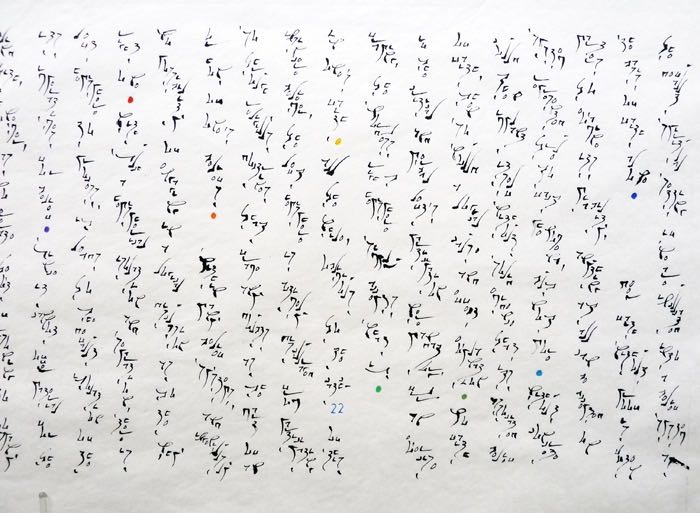
Scroll 28-section 3.2
Since it cannot offer material for the left hemisphere to process, it leads to the default isolation of the right one. With such a hemispherical isolation and separation there is no possibility of engaging in a logical discussion as to the why or how of one’s beliefs.
Within many belief systems, and ingeniously so through religious doctrines that frame any doubts as the sign of an insincere believer, the left hemisphere is actively discouraged from participating in one’s faith. All the while, oblivious to the catch-22 of this framing, the wordless right hemisphere simply accepts what is.
If the critical and verbal left’s participation were mandatory for an exercise of faith, then so would a logical cause & effect explanation. No faith could then implant itself without solid evidence that its associated belief system represented true to fact phenomena, but not more. Without concrete markers to examine its viability, anything at all can be accepted on the basis of faith alone.
Deep faith without proof is often the default spiritual setting (though still only up to a point) if we are inculcated into a belief system as >
__________________
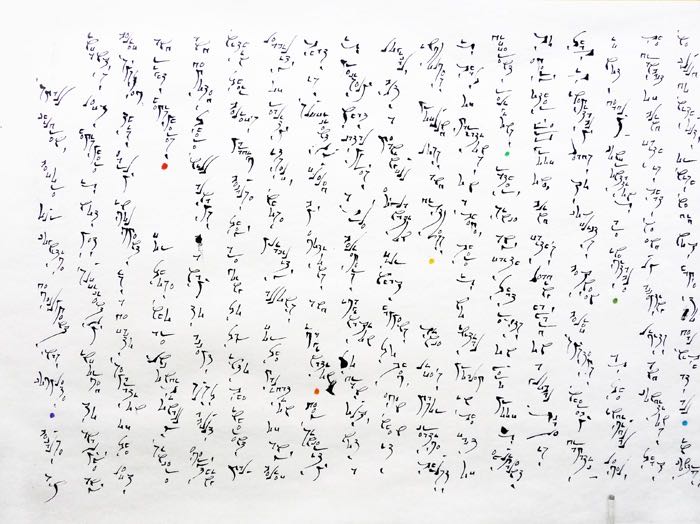
Scroll 28-section 4.1
> small children, before our cognitive development was complete. Because an infant’s left hemisphere is not yet sufficiently informed to analyze any belief system, this early involvement is a de facto separation of the left and right hemispheres.
For those who are unconditionally sincere and devoted there will always be a way to accept just about everything within their belief’s paradigm because they are going to tap into the inherent malleability of reality itself, whose pliability allows for the validation of any belief that is sufficiently fueled by emotions and imagination. Deep sincerity is precisely what catalyzes a true believer’s imagination to draw out, not a logical, but a meaningful explanation for what happens to them, even when it involves profound loss and distress.
Since life’s major creative thrust is that of variations on a theme, there is no initial problem in the fact of different religions. Rather, since any faith that rests on zero proof is equivalent to every other zero proof one, blind faith’s leading hazard on a global scale is that it inevitably leads to conflicts between belief systems whereby dramatic—if not deadly—confrontations are inevitable.
_________________
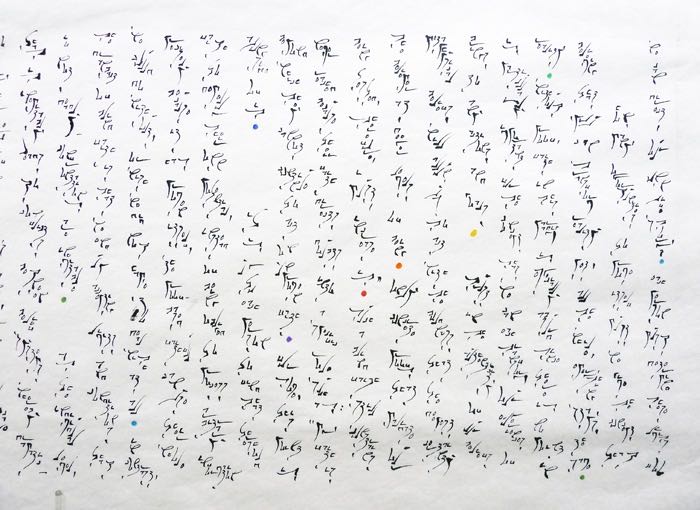
Scroll 28-section 4.2
At the individual level, the drawback of blind faith is that we end up accepting limits and conditions that we could do without, or wish we did not to have to deal with at all. In contrast, precisely because it has proven itself, the proof-based faithful can use their whole faith to develop their own potential, instead of being obliged to process arbitrary information alongside of it.
It is up to each person to find that threshold beyond which they cannot continue to act on unproven faith. For some, this point is never reached because their faith directs doubts into a specific role such as: "My faith is being tested, therefore I must increase it.” Such a blind faith still constrains the believer at deeper levels of being. Only concrete proofs that validate our metaphysical beliefs will allow us to act with the boldness that the deepest certainty brings to any actions and goals.
Trust in the authenticity of our beliefs is particularly important for the concept that we can each transform our experiences of reality. Without proof, faith in this paradigm is especially absurd since there is no point in believing that you can transform reality yet, all the while, everything stays the same.
How many opportunities to prove itself must we give the concept that we can direct our own life story? Each person must determine these limits for >
_______________
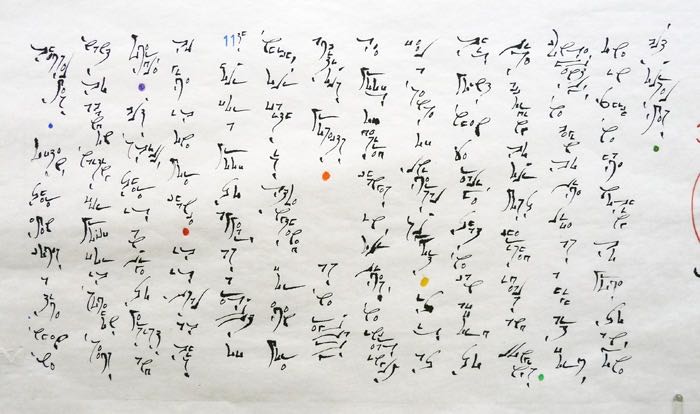
Scroll 28-section 5.1
> themselves. Often, there even comes a time when we want to abandon waiting for proof for it somehow seems overdue. But still, there is an urge to persist and to give it one more chance. It is usual at this 11th hour for proof to appear, as a result of which, our faith is strengthened for even more ambitious projects.
As we regularly see proofs of desired changes in our lives, we increasingly feel a sense of universal support. It is at this point when we realize that we can afford to live according to our most cherished ideals and longings. Consequently, we begin to live life as a high art form, one in which we have nothing to prove to anyone but ourselves.
__________________
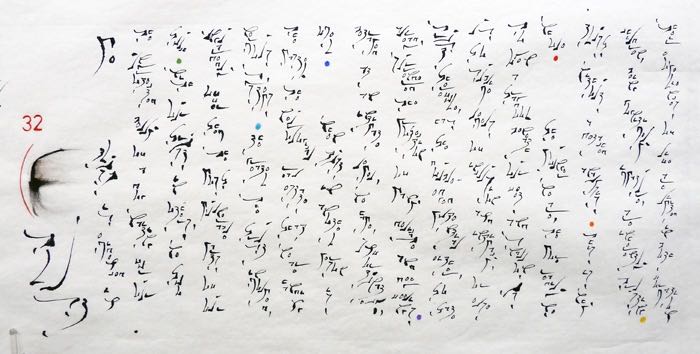
Scroll 28-section 5.2
32 Trust Me
Trust is illustrated in the unprotected belly of a dog waiting for our touch. With our trust in others, we too unguardedly offer them the most vulnerable parts of our nervous systems. The greater the trust involved, the vaster the area of the neurology that we are handing over.
When our trust in another person is betrayed at an intimate level, we have, unfortunately, already surrendered the protection of many delicate and deep feelings. Trust therefore, has the double-edged potential either, to take us to sublime levels of inclusion and intimacy, or else to open a trapdoor beneath our feet and swallow us whole.
The younger we are, the more readily we trust without a detached analysis. This is why children, being cognitively immature, are inherently trusting. Their experiences of life are limited in both formation >
________________
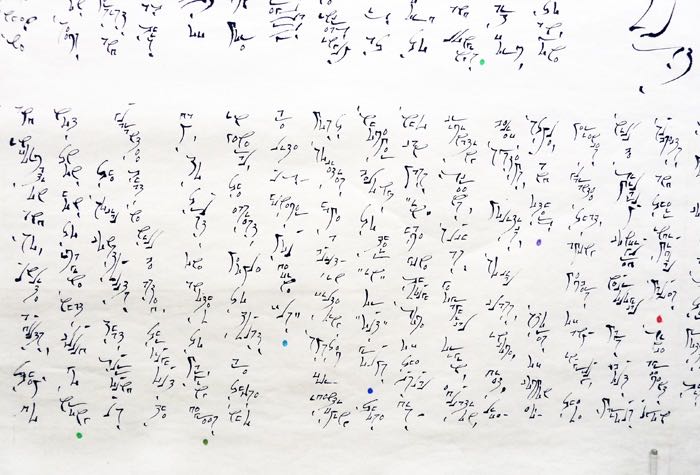
Scroll 28-section 6.1
> and information and so, unlike adults, they do not know how to imagine what could go wrong.
The social constructs that surround us guarantee that we will be asked, throughout the day, to trust one another to varying degrees. In general, the easiest people to trust are those who are like us—however you define “us”.
Most societies have a built-in filtering system for identifying whoever belongs to their “in” or “out” groups. Those who can pass “in” have gone through some of the usual discriminating screens, such as: geographical origin, education, belief systems, politics, social class, income, diets, lifestyles, and others.
Stores of common experiences guarantee that, among the members of any in-group, there will be similarly configured neurological maps about various subjects and their individual values.
__________________
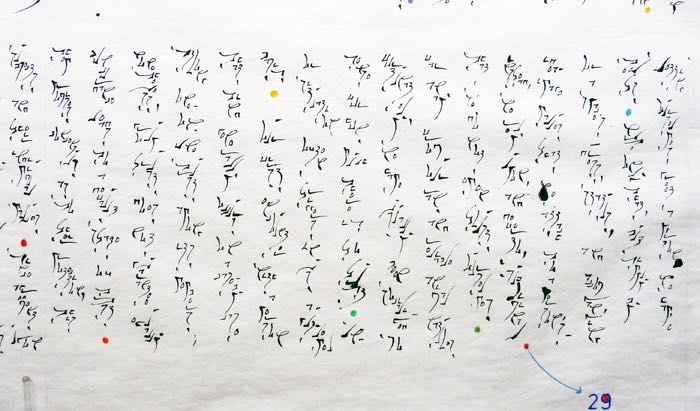
Scroll 28-section 6.2 — End of Scroll 28
Since agreement upon them promises consensus as to their protection, this concordance leads to a default state of trust. Nonetheless, group trust does not guarantee equally strong one-on-one trust among its members; that kind generally occurs on a case-by-case basis.
Our first encounter with a person or situation often triggers in us a gut-level sense for how much there is to trust. Unfortunately, we have usually been socialized so far from our raw and reliable animal natures that we do not even trust ourselves. Instead, we rely upon, and defer to, the subliminal idea-image values that we attach to a person’s—or a room’s—dress, status, and accompanying texts. Not only that, but simply by letting ourselves greet a person, we have >
< Scroll 27 ____________________________________________________ Scroll 29 >
Scrolls: 1 . 2a . 2b . 3 . 4 . 5 . 6 . 7 . 8 . 9 . 10 . 11 . 12 . 13 . 14 . 15 . 16 . 17 .
18 . 19 . 20 . 21 . 22 . 23 . 24 . 25 . 26 . 27 . 28 . 29 . 30 . 31 . 32 . 33 . 34 .
Buy HD e-Books & Text —— www.ccelian.com
© C.C. Elian 2010 - 2016